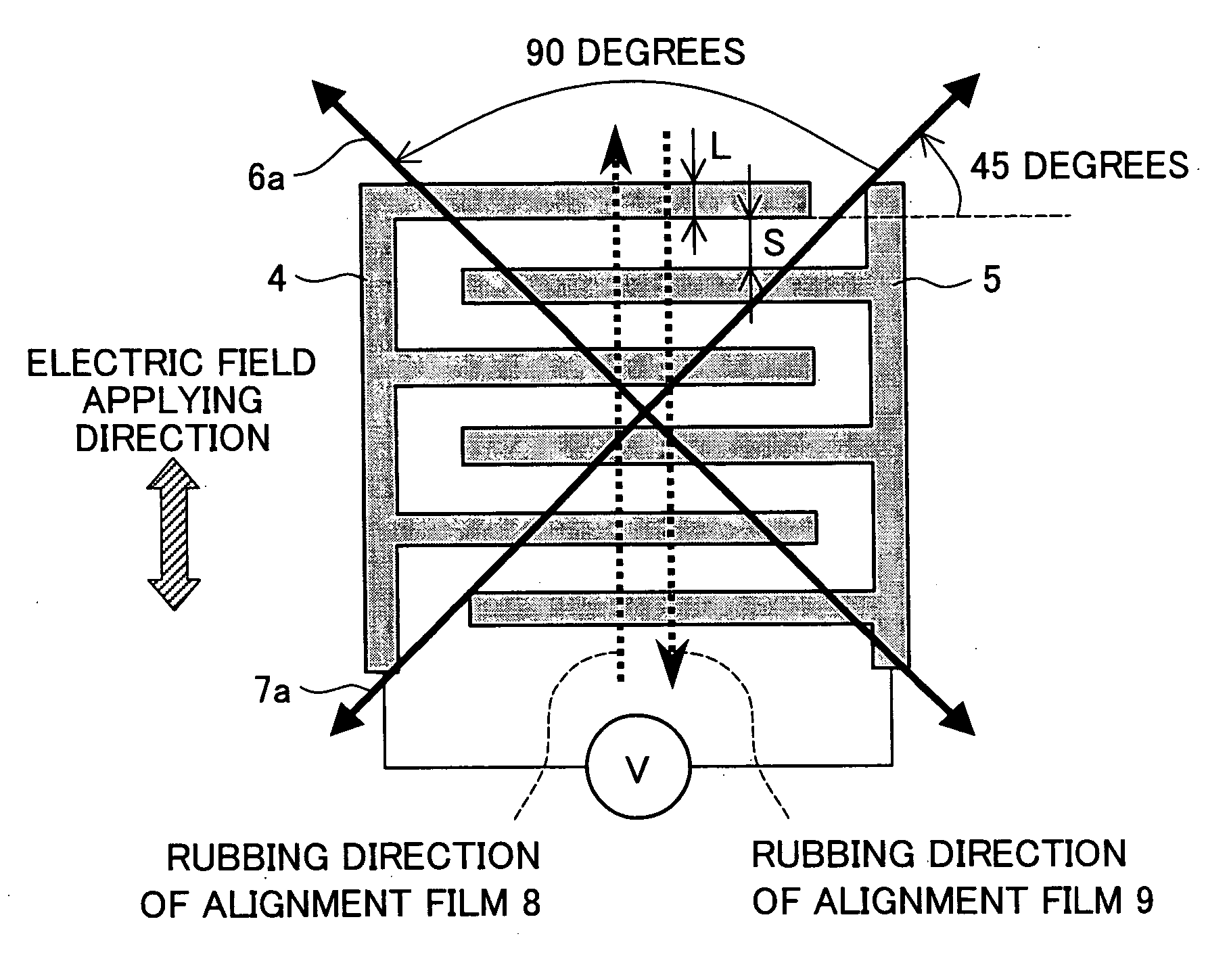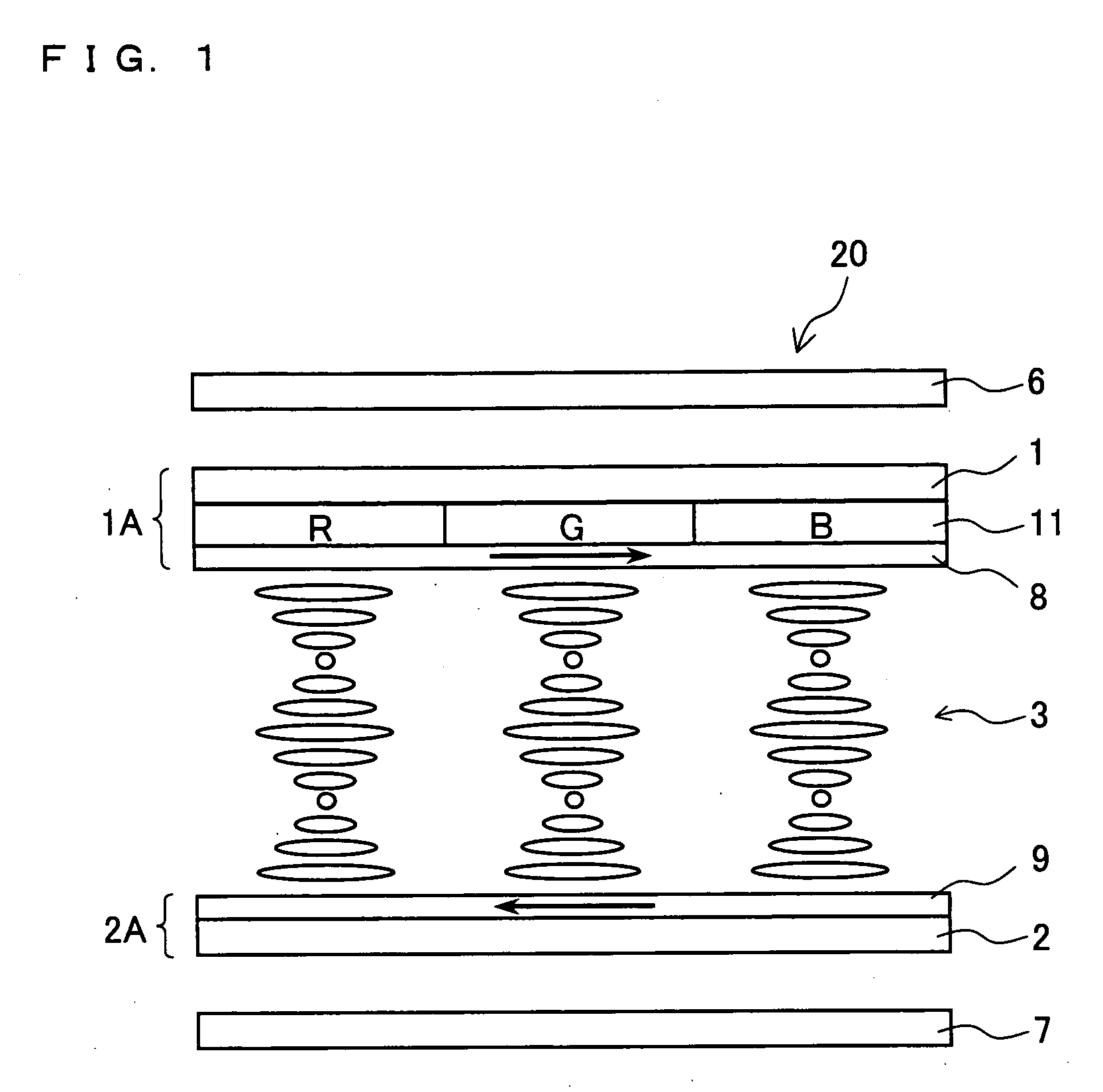Display element and display device
a display element and display device technology, applied in the field of display elements and display devices, can solve the problems of inability to enlarge the temperature range of driving in principle, weak phase, and inability to resist the application of electric fields and reliability, and achieve wide viewing angles, high contrast properties, and high speed response.
- Summary
- Abstract
- Description
- Claims
- Application Information
AI Technical Summary
Benefits of technology
Problems solved by technology
Method used
Image
Examples
embodiment 1
(Structure of Display Element 20)
[0114]The following explains an embodiment of the present invention with reference to drawings. FIG. 1 is a cross-sectional drawing schematically illustrating an outline structure of a display element 20 of the present embodiment. FIG. 4 is a block diagram schematically illustrating an outline structure of a main part of a display device 100 including the display element 20. FIG. 5 is an equivalent circuit diagram schematically illustrating an outline structure of a periphery of the display element 20.
[0115]The display element 20 of the present embodiment uses as an optical modulation layer a cholesteric liquid crystal layer that exhibits optical isotropy in a direction parallel to a plane of a substrate at a time when no electric field is applied, and the display element 20 performs display by applying an electric field on the cholesteric liquid crystal layer so as to exhibit optical anisotropy in the direction parallel to the plane of the substrate...
embodiment 2
[0210]The following explains another embodiment of the present invention. For convenience of explanation, members having the same functions as those explained in Embodiment 1 are given the same reference numerals and explanations thereof will be omitted here.
[0211]As shown in Table 1 in Embodiment 1, a liquid crystal cell to which liquid crystals have been poured and which has been subjected to a re-aligning treatment exhibits complete optical isotropy (transparent state) in a direction perpendicular to a plane of a substrate. On the other hand, the V-T property of FIG. 7 and the response property of FIG. 9(a) show that the complete optical isotropy (transparent state) equal to an original alignment state is not realized after application of a voltage is stopped, and some amount of light leaks. That is, in measuring electro-optical property, liquid crystals do not instantly go back to its initial optical isotropy state after application of a voltage is stopped.
[0212]This is because,...
embodiment 3
[0247]The following explains further another embodiment of the present invention. For convenience of explanation, members having the same functions as those explained in Embodiment 1 or 2 are given the same reference numerals and explanations thereof will be omitted here.
[0248]FIG. 12 is a plan drawing showing pectinate electrodes 4a and 5a included in a display element 20a of the present embodiment, the pectinate electrodes 4a and 5a being seen from a direction normal to a plane of a substrate. As shown in FIG. 12, each pixel of the display element 20a is provided with an electrode couple 10 including the pectinate electrodes 4a and 5a. The electrode couple 10 includes at least two domains having different directions in which electric fields are applied. That is, as shown in FIG. 12, the electrode couple 10 includes a domain where pectinate parts 4aa and 5aa are provided and a domain where pectinate parts 4ab and 5ab are provided. A direction in which the pectinate parts 4aa and 5a...
PUM
| Property | Measurement | Unit |
|---|---|---|
| bending angle | aaaaa | aaaaa |
| angle | aaaaa | aaaaa |
| temperature | aaaaa | aaaaa |
Abstract
Description
Claims
Application Information
 Login to View More
Login to View More - R&D
- Intellectual Property
- Life Sciences
- Materials
- Tech Scout
- Unparalleled Data Quality
- Higher Quality Content
- 60% Fewer Hallucinations
Browse by: Latest US Patents, China's latest patents, Technical Efficacy Thesaurus, Application Domain, Technology Topic, Popular Technical Reports.
© 2025 PatSnap. All rights reserved.Legal|Privacy policy|Modern Slavery Act Transparency Statement|Sitemap|About US| Contact US: help@patsnap.com



